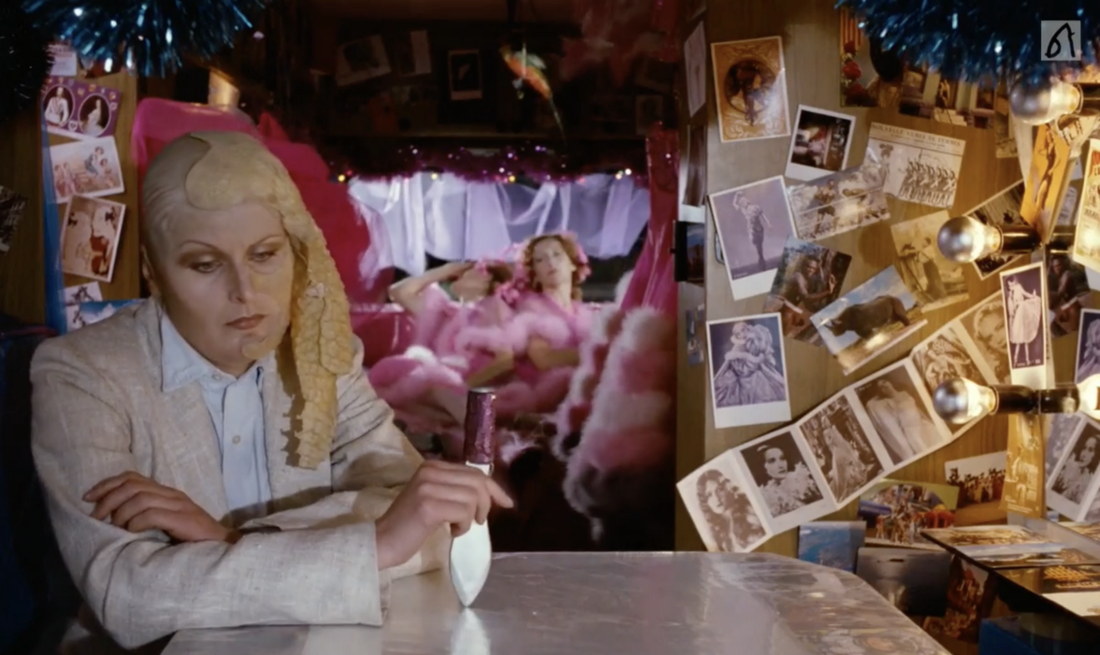
The Botan Dōrō story originally came to Japan in a Chinese collection of ghost stories by Qu You. It is a classic tale of doomed lovers who cannot be together. In some versions it is because of their differing social status, in others, it is because of family duty or honor, but in all of them, the ultimate barrier that keeps Otsuyu and Shinzaburou from being together is death. The story usually begins with Otsuyu’s death, often before she even meets Shinzaburrou. They meet during the Japanese festival of Oban, a festival for the dead.
Oban is celebrated every year from August 13 to August 16. During this time the spirits of the dead come home to visit. It is not unlike the Mexican tradition of Dios De Los Muertos.

It is a happy time, but at the end of the festival great care has to be taken to guide the spirits back to the spirit world. There is a danger that the spirits might get lost. There are a variety of ways to assist them in their journey back. Best known is the lantern ceremony where lit lanterns are floated out on the water. The lanterns are rafts for the deceased to ride home. The dead are also provided with other vehicle options such as a cucumber and an eggplant fashioned with chopstick legs. The cucumber is a horse for getting home quickly and the eggplant is a cow for leaving home slowly.

There are many film adaptations of the Botan Dōrō legend. Just as there are different versions of the story many of the films deviate from the original tale. There was a silent film version made in 1910 that has unfortunately been lost along with almost a dozen others.
In 1968 there was a star-studded production directed by Satsuo Yamamoto. It was called Botan Dōrō, translated as Peony Lantern. It starred Kojiro Hongo as the main character Shinzaburou, and Miyoko Akaza as the female lead Otsuyu, but also featured Takashi Shimura, and Kō Nishimura.
In Yamamoto’s version, the story is turned into a cross between a neorealist communist lesson and a Buddhist parable. In this version, our hero, Shinzaburou, is from a prominent family but he does not share their elitist values. He has chosen to be a teacher for underprivileged children, which his family thoroughly disapproves of. They want to marry him off to a prominent woman and set him on a respectable life trajectory.
A marriage is arranged but these plans are foiled when Shinzaburou meets the lovely Otsuyu and her handmaid. Shinzaburou and Otsuyu fall in love, but little does Shinzaburou knows that Otsuyu is a ghost and is only visiting during Oban. Eventually, Shinzaburou finds out and is distraught. He loves Otsuyu and wants desperately to continue spending each night of Oban making love with her but their encounters are quickly draining him of his life force. If he continues to see her he will die. Dying will allow him to join her forever, but he will have to abandon the children he has dedicated his life to.

The dilemma is presented in a Buddhist fashion where Shinzaburou is ready to die but wants to stay because he knows he can be useful. This is a description of what it means to be a Bodhisattva. In Buddhism, there are no angels instead there are individuals who have reached nirvana but choose to stay on earth to help others.
Along with the Buddhist symbolism, there is the communist ideology of dedicating oneself to the proletariat. Throughout the film, the members of his noble family are shown to be callous, narcissistic, and venal, but Shinzaburou exhibits an enlightened sense of responsibility. Motivated by his dedication to the children he tries his best to reject Otsuyu.
With the aid of a Zen monk, he seals his house with anti-ghost charms but in the end, he is unable to resist her.
Shinzaburou is being manipulated at every turn. The zen monk is trying to save him, his family wants to control him, and Otsuyu is constantly pulling him back from the brink of leaving her. In addition, there is Shinzaburou’s servant, Banzo who is always looking to turn situations to his favor. Like the others, he is a dual symbol. He represents the greedy capitalist who thinks only of himself, but also the Buddhist idea of the layman caught up in a world of delusion and immediate gratification.
The first half of the film is skillfully crafted, especially the camera movement. Imitating the sliding doors and shoji screens found in Japanese interiors, the camera slides back and forth on a dolly following the characters as they move from room to room.

There is also a lot of careful play with transparency. There are numerous sheer curtains, thin bamboo mesh partitions, silhouetting shoji screens, and other devices that allow Yamamoto to create dynamic compositions where individuals can be suspended in a semi-present state. This device is actually lifted from the Kabuki version performed on stage.
The sliding camera and semi-transparent environment allow for a continual play between subjective perceptions. When Shinzaburou looks at Otsuyu he sees a beautiful woman, but when others see her she is either a rotting zombie or a skeleton. There are some amazing paintings and woodblock prints that illustrate this idea, such as the one below where Shinzaburou has his enormous penis thrust through a skeleton’s pelvis.

The sexual aspect of this story is more prominent in the 1972 version made by Chūsei Sone. This version was titled Seidan Botan Doro and was marketed as a pink film. It does have some nudity but it is not gratuitous. The film’s inclusion in Nikkatsu’s Roman Porno Series along with movies like Coed Report: Yuko’s White Breasts and Sex Rider: Wet Highway is ridiculous. Like its predecessor, Seidan Botan Doro is a well-crafted film whose purpose is clearly more than titillation.
Seidan Botan Doro is more conventional than Botan Dōrō in that it centers on standard ideas of sin. The story is the same but the driving forces are reduced down to straightforward greed and lust. Despite this, the structure of the film is very creative. The subjectivity of the story is heightened and it is very difficult to tell the difference between fantasy and reality. When it works it feels like a Bunuel film, but it doesn’t always work. Sometimes it just reads as confusing and disjointed.
Both films are stronger in their first half and then tend to give way to melodrama. As emotions peak the acting gets overwrought, and characters lose some of their dimension.
The special effects are also uneven. The first film does a better job of using subtle lighting and understated makeup to make the ghosts feel otherworldly, but both films cross the line into clumsy use of biology class model skeletons and green makeup which is unfortunate.
The filming of Seidan Botan Doro is more static than Botan Dōrō but the beautiful compositions remain. The playing with transparency is also continued. There is a complex scene involving a hole in a shoji screen, silhouettes, and switching points of view. It creates a multi-layered set of interactions that layout the different relationships between the characters and what they perceive.

Seidan Botan Doro is more colorful and lush and of course graphic, but the sex is tame. It would barely require an R rating in America. More importantly, the sex is appropriate to the film. The story is about overwhelming passion that saps the characters’ energies and reason.

The premise of the Botan Dōrō story is found in different variations around the world. The dynamic of being caught between personal passions and social duty or honor is as common as Joseph Campbell’s hero’s journey. It’s an opportunity to indulge our belief in the transcendent ecstasy of “true love” but whether it is Romeo and Juliet or Cameron’s Titanic the story is also used to impugn the powerful and their inability to understand anything beyond materialism. In its most basic form, it depicts a conflict between the heart and the mind, between emotion and reason, between the limbic system and the cortex. As an audience, we never tire of watching people struggle against their own better judgment.

If you enjoyed this article click here for more
www.filmofileshideout.com/archives/the-role-of-the-environment-in-onibaba-and-woman-in-the-dunes




[…] If you enjoyed this article click here for morewww.filmofileshideout.com/archives/two-film-adaptions-of-botan-doro-japans-favorite-ghost-story […]